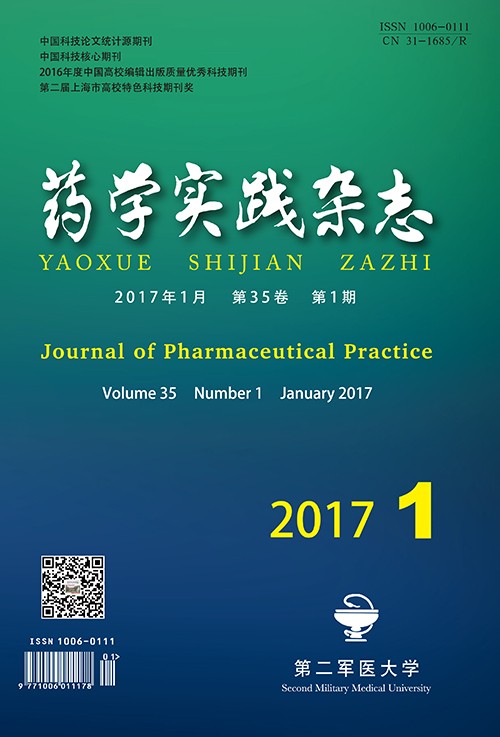|
[1]
|
Martín-Pe a A, Aguilar-Guisado M, Cisneros JM. Does the current treatment of invasive fungal infection need to be reviewed[J]. Enferm Infecc Microbiol Clin, 2014, 32(8):523-528. |
|
[2]
|
Groll AH, Lumb J. New developments in invasive fungal disease[J]. Future Microbiol, 2012, 7(2):179-184. |
|
[3]
|
Pfaller MA, Hata K, Jones RN, et al. In vitro activity of a novel broad-spectrum antifungal, E1210, tested against Candida spp. as determined by CLSI broth microdilution method[J]. Diagn Microbiol Infect Dis, 2011, 71(2):167-70. |
|
[4]
|
Maebashi K, Kudoh M, Nishiyama Y, et al. A novel mechanism of fluconazole resistance associated with fluconazole sequestration in Candida albicans isolates from a myelofibrosis patient[J]. Microbiol Immunol, 2002, 46(5):317-326. |
|
[5]
|
Jia XM, Wang Y, Jia Y, et al. RTA2 is involved in calcineurin-mediated azole resistance and sphingoid long-chain base release in Candida albicans[J]. Cell Mol Life Sci, 2009, 66(1):122-34. |
|
[6]
|
Espinel-Ingroff A, Pfaller M, Cantón E, et al. Emerging resistance to azoles and echinocandins:clinical relevance and laboratory detection[J]. Curr Fungal Infect Rep, 2010, 4(3):186-195. |
|
[7]
|
Xia Lk, Idhayadhulla A, Lee YR, et al. Microwave-assisted synthesis of diverse pyrrolo[3,4-c]quinoline-1,3-diones and their antibacterial activities[J]. ACS Comb Sci, 2014, 16(7):333-341. |
|
[8]
|
Musiol R, Serda M, Hensel-Bielowka S, et al. Quinoline-based antifungals[J]. Curr Med Chem, 2010, 17(18):1960-1973. |
|
[9]
|
Chen M, Chen H, Ma JW, et al. Synthesis and anticancer activity of novel quinoline-docetaxel analogues[J]. Bioorg Med Chem Lett, 2014, 24(13):2867-2870. |
|
[10]
|
Musiol R. Quinoline-based HIV integrase inhibitors[J]. Curr Pharm Des, 2013, 19(10):1835-1849. |
|
[11]
|
Zuo R, Garrison AT, Basak A, et al. In vitro antifungal and antibiofilm activities of halogenated quinolone analogues against Candida albicans and Cryptococcus neoformans[J]. Int J Antimicrob Agents, 2016, 48(2):208-211. |
|
[12]
|
Vandekerckhove S, Herreweghe SV, Willems J, et al. Synthesis of functionalized 3-, 5-, 6-and 8-aminoquinolines via intermediate (3-pyrrolin-1-yl)-and (2-oxopyrrolidin-1-yl)quinolones and evaluation of their antiplasmodial and antifungal activity[J]. Eur J Med Chem, 2015, 92(6):91-102. |
|
[13]
|
Kouznetsov VV, Gómez CMM, Derita MG, et al. Synthesis and antifungal activity of diverse C-2 pyridinyl and pyridinylvinyl substituted quinolines[J]. Bioorg Med Chem, 2012, 20(21):6506-6512. |
|
[14]
|
Vandekerckhove S, Tran HG, Desmet T, et al. Evaluation of (4-aminobutyloxy)quinolines as a novel class of antifungal agents[J]. Bioorg Med Chem Lett, 2013, 23(16):4641-4643. |
|
[15]
|
Mohammad AIC, Satyendra D, Apurba T, et al. Synthesis and antimicrobial screening of some novel substituted thiophenes[J]. Hygeia, 2012, 4(1):112-118. |
|
[16]
|
Scotti L, Scotti MT, Lima EO, et al. Experimental Methodologies and evaluations of computer-aided drug design methodologies applied to a series of 2-aminothiophene derivatives with antifungal activities[J]. Molecules, 2012, 17(3):2298-2315. |
|
[17]
|
Mabkhot YN, Kaal NA, Alterary S, et al. Synthesis, In vitro antibacterial, antifungal, and molecular modeling of potent anti-microbial agents with a combined pyrazole and thiophene pharmacophore[J]. Molecules, 2015, 20(5):8712-8729. |
|
[18]
|
Ajdacic V, Senerovic L, Vranic M, et al. Synthesis and evaluation of thiophene-based guanylhydrazones (iminoguanidines) efficient against panel of voriconazole-resistant fungal isolates[J]. Bioorg Med Chem, 2016, 24(6):1277-1291. |
|
[19]
|
Guimar[AKa~D]es GP, Reis MYFA, Silva DTC, et al. Antifungal activity of topical microemulsion containing a thiophene derivative[J]. Braz J Microbiol, 2014, 45(2):545-550. |







 DownLoad:
DownLoad: